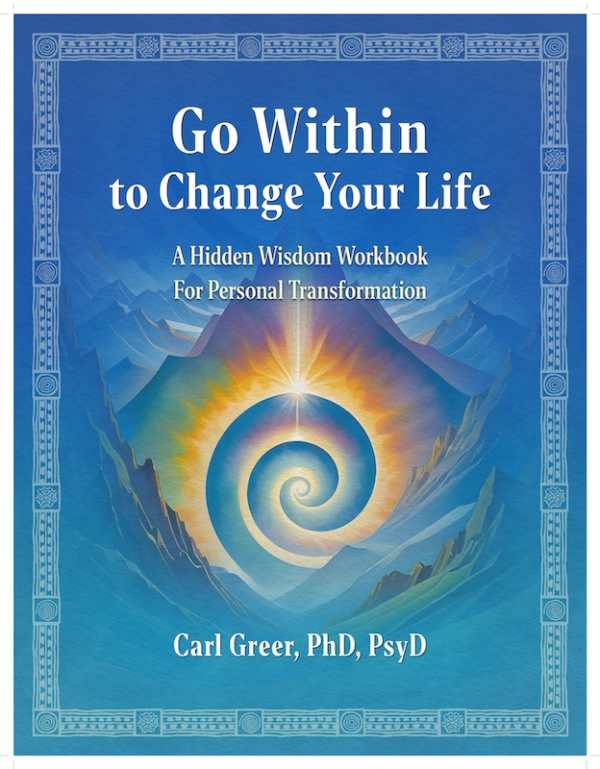Go Within to Change Your Life
A Hidden Wisdom Workbook for Personal Transformation
The nurturing self-help workbook Go Within to Change Your Life issues an open invitation to transformative healing.
Carl Greer’s transformative self-help workbook Go Within to Change Your Life promotes healing and self-discovery via hidden wisdom, deep contemplation, and meditation.
Promoting spiritual healing and emotional growth, the book recommends adopting a positive perspective and fostering mindsets of self-acceptance and inner calm. It says that one’s fixed mindsets should be reexamined in the name of flexibility, and that often people search for answers that are already within themselves. It also reframes “suddenlies,” or unexpected challenges, as fertile ground for growth and self-reflection. And it places emphasis on the hidden wisdom that connects people to the divine, nature, and one another.
Narrated in the gentle, firm voice of a spiritual mentor, the book encourages “connecting with hidden wisdom and communicating with it” throughout. Modalities including prayer and meditation are encouraged, and references are made to an overarching “Source” that seems to tie to a bevy of creeds, religions, and spiritual beliefs. All perspectives are treated with humility, which is also encouraged in the audience: When performing visualizations and dialogues with the wise inner self or another aspect of hidden wisdom, the book says, it is vital to ask the inner self for permission to proceed.
The book’s perspective represents a variety of influences, including Jungian analysis, Freudian theory, martial arts wisdom, Peruvian shamanism, and Indigenous knowledge. The range of cultural inspiration lends the book breadth at the expense of depth. Indeed, it falls short of providing a cohesive toolkit of methods of transformation, and its original insights are obscured behind its bevy of references; it does not link the healing rituals of various cultures into a greater whole. Still, in drawing on healing rituals from a variety of cultures, the book achieves vitality and diversity of thought.
Those concepts that recur throughout the workbook are more effective than the ones that are introduced in brief, isolated sections. Concepts like kime and maai—about being at the right place, at the right time, and at the correct distance—are reframed in the context of interpersonal relationships, for example, and are iterated and expanded upon to address a spectrum of emotional states. The repetition of these concepts is critical to their success as part of a healing toolkit. Other spiritual techniques show up in various experiential anecdotes but lack the same transformative power in part because they are touched upon in a fleeting manner. Indeed, the book’s ultimate cohesion is threatened by its deluge of disparate spiritual techniques.
While the book is an open invitation for transformative healing, much of the work is left to the imagination of the audience. There is ample space for writing down observations of personal growth and change, recording spiritual perspectives, reflecting on past experiences, writing and revising the narrative of one’s life, and setting goals. There are also blank spaces for making original art based on observations of nature and creative writing prompts for addressing mortality a la the ancient Japanese custom of composing a “death poem.” Despite the interactive nature of the book, its brevity and liberal use of blank space impede its substance. An appendix provides room for additional actionable and achievable goals to be written down and followed up on as a complement to previous goal-setting activities in the book; it’s a gentle encouragement to continue on the path of self-improvement.
Raising a plethora of questions about a life well lived, Go Within to Change Your Life is a powerful self-help workbook for spiritual healing and personal growth.
Reviewed by
Caitlin Cacciatore
Disclosure: This article is not an endorsement, but a review. The publisher of this book provided free copies of the book and paid a small fee to have their book reviewed by a professional reviewer. Foreword Reviews and Clarion Reviews make no guarantee that the publisher will receive a positive review. Foreword Magazine, Inc. is disclosing this in accordance with the Federal Trade Commission’s 16 CFR, Part 255.

